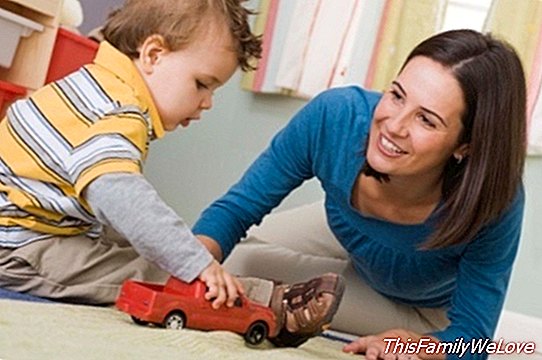Dislalia infantile, difficulty in pronouncing

Children's dyslalia is a speech disorder at the phonological level that causes difficulties in pronouncing a certain phoneme. It can also happen that the isolated phoneme can be pronounced by the child, but that its combination with other phonemes presents complications, and in this case it should not be talked about. dislalia childish but of articulatory immaturity.
Phonological training and learning
It starts soon after the baby is born. In its first stage, the baby makes sounds and babbles not only to delight, but also to begin the recognition of his own voice, and therefore of his own "I". This also serves to explore the variety of sounds you can achieve through the different facial and buccal gestures that it adopts.
The natural development of the child leads him to acquire, between six and nine months, the intonation and rhythm of the language of his environment, so that at this stage the babbling of a French baby does not "sound" like a baby Spanish. From nine months on, the baby will begin true phonological learning that will lead to the "first word" or usually "proto-word" around the age of one year and in general, most of the phonetic system will be mastered around the five years and must have been acquired completely by seven years.
How to detect problems in children's speech
In spite of the fact that this linguistic learning is its own and natural in these first years of life, it is also a very complex phenomenon that involves many factors that determine its final success. It is necessary to emphasize that from the first moment the child must adapt his individual phonetics to the phonetics of the language in which he is immersed and for this he needs:
1. Possess good attention capacity.
2. Develop the ability to discriminate auditory sounds.
3. Have a good oral-facial motor and respiratory coordination.
4. Get the right motivation to speak well.
It is very important that the child, little by little, is acquiring these four basic skills, since the most common dyslalias appear many times due to the lack of any of them. In the case of audiological dyslalia: it is the hearing loss or hearing loss that causes the child not to hear the phonemes well, and in the case of the most common, the functional dyslalia, the sum of the deficit of auditory discrimination with the lack of fine psychomotricity gives rise to the characteristic phonetic errors.
How to detect language disorders in babies
To detect if a baby can begin to have problems with language, including infantile dyslalia, it is advisable to:
1. Detect if you react to the sound.
2. If you try to find the source of a noise emission.
3. If it causes sound emissions such as babbling or imitates gestures of the face of adults as the smile, since that shows that responds to the act of communication.
In the case of children in childhood, it is advisable to perform hearing exams to detect a possible hearing loss that prevents the correct pronunciation.
Marisol Nuevo Espín




